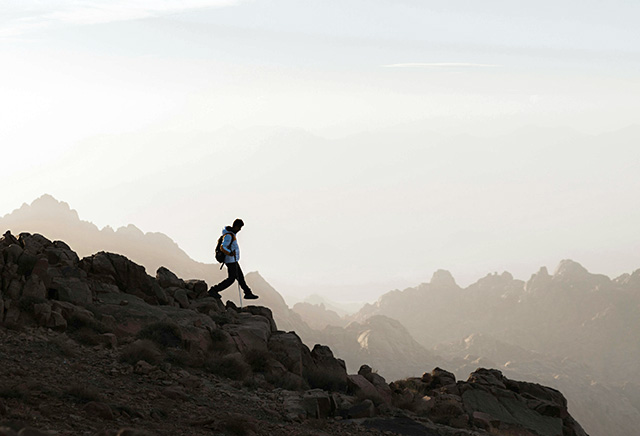Trekking offers more than stunning views. It's also a powerful boost for cardiovascular health. For instance, navigating varied terrains strengthens the heart, improves lung capacity, and enhances blood circulation.
 trekking for fitness
trekking for fitnessSo, embrace trekking as an adventure that naturally fortifies your heart's health and overall well-being with each exhilarating step.
Trekking Leads to Enhanced Stamina and Strength
Trekking involves varied terrains that naturally boost stamina. As you navigate steep ascents and descents, your heart works harder, enhancing cardiovascular endurance. This continual exertion builds strength in the heart muscle itself.
Whether you're hiking in the Andes of Peru or doing a hut-to-hut trek in the High Tatras in Slovakia, each step improves your body's ability to pump blood efficiently.
Over time, trekking not only elevates your stamina but also fortifies muscles, creating a robust foundation for cardiovascular health improvements.
Trekking Boosts Lung Capacity for Cardiovascular Gains
When you trek, the activity challenges your respiratory system, pushing you to breathe deeply and efficiently. This enhances lung capacity over time. Increased lung volume allows for more oxygen intake, which is vital for cardiovascular health.
As you trek through mountainous paths or uneven trails, your body adapts to deliver oxygen-rich blood more effectively.
With each deep breath during these activities, you're training your lungs and heart to work in harmony.
Enhanced lung function supports better endurance and stamina, strengthening the overall cardiovascular system as a result.
Trekking Activities Improve Blood Circulation
Engaging in regular trekking activities stimulates better blood circulation. The varied terrains require your heart to pump more vigorously, which promotes healthy vascular function.
As you tackle hills and navigate trails, your cardiovascular system becomes more efficient at distributing oxygen and nutrients throughout the body. This increased circulation can help lower blood pressure and improve overall arterial health.
By consistently engaging in these dynamic movements, trekkers enjoy improved circulation that supports heart health over time, contributing to a robust cardiovascular system that adapts well to daily challenges.
Terrain Challenges Can Impact Heart Health
Tackling diverse terrains during trekking trips pushes your heart to adapt, improving cardiovascular strength.
Ascending steep hills and navigating rocky paths requires an increased heart rate, enhancing its efficiency over time. This natural workout encourages better blood flow and oxygen distribution. It also strengthens the cardiac muscles.
With every step on challenging trails, your heart gains endurance that supports long-term health benefits.
Temperature Variations During Treks Can Affect Cardiac Function
Trekking can expose the body to fluctuating temperatures, impacting cardiac function.
In colder climates, the heart works harder to maintain core temperature by increasing blood flow and circulation. Meanwhile, warmer conditions demand efficient heat regulation through vasodilation and perspiration, challenging cardiovascular endurance.
Adapting to these variations strengthens heart muscles and enhances overall resilience. This natural adaptation helps improve thermal tolerance in diverse environments over time - supporting better performance not only during treks but also in daily activities where environmental factors may similarly affect one's well-being and cardiovascular health.
Final Thoughts
Trekking fortifies your heart, boosts lung capacity, and improves circulation. Each adventure builds endurance and reduces stress, promoting overall cardiovascular wellness. So, embrace the trails as a joyful path to stronger heart health and long-lasting vitality in everyday life.
Related Pages
- Stretch Before and After You Walk — a few stretches suitable for your warm-up before you start your walk.
- Tips for Walking for Fitness
- Why Walk? — many great reasons to go walking
- Walking for Fitness
- All about Aerobic Endurance Fitness
- Gym Guide for Novices
- Walking for weight loss
- Walking Fitness Tests


 Current Events
Current Events